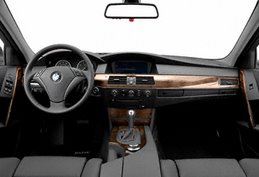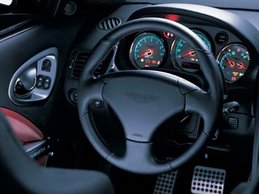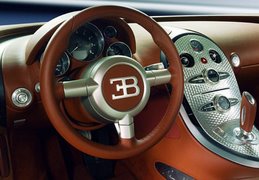 2008 Buick Enclave CXL AWD - It’s the first Buick in recent memory to report advance orders—some 8000 prior to its official April on-sale date.
2008 Buick Enclave CXL AWD - It’s the first Buick in recent memory to report advance orders—some 8000 prior to its official April on-sale date. The product justifies the advance orders. Buick’s big new wagon delivers excellent all-around utility—comfortably and quietly—and looks good while doing so, inside and out. This last is no mean feat, because utility wagons tend to look like building blocks. The Enclave’s exterior, in contrast, is devoid of straight lines, a sweet confluence of curves that disguise its substantial dimensions (barely smaller than those of the Chevy Tahoe and GMC Yukon). In fact, the Enclave can actually be called stylish.
To review, you will recall that the Enclave, as well as the GMC Acadia and Saturn Outlook, use GM’s Lambda ar
 chitecture, a large (and exceptionally rigid) front-drive unibody platform that represents a major departure from the General’s conventional body-on-frame utes, such as the Yukon, et al. To be fair to the traditionals, there is a downside to the unibody approach. Towing capacity for the Enclave and its kin tops out at 4500 pounds. The Tahoe and the other GMT900 SUVs can handle much bigger loads and also offer V-8 engine options.
chitecture, a large (and exceptionally rigid) front-drive unibody platform that represents a major departure from the General’s conventional body-on-frame utes, such as the Yukon, et al. To be fair to the traditionals, there is a downside to the unibody approach. Towing capacity for the Enclave and its kin tops out at 4500 pounds. The Tahoe and the other GMT900 SUVs can handle much bigger loads and also offer V-8 engine options.Best in class also applies to the Enclave’s interior noise levels, particularly cruising at 70 mph. At 66 dBA, the big Buick is not only quieter than the Acadia but also 2 dBA more serene than the Lexus RX400h we tested in March 2005. Cathedral quiet abets comfort, and so does the Enclave’s handsomely appointed interior. Our top-of-the-line CXL was configured for seven (two-two-three seating), although an eight-passenger edition is available. Space was ample in the rear rows, thanks to fore-and-aft adjustability of the middle row, and our Enclave arrived with all
 the infotainment features, including a DVD player that keeps sibling rivalries from becoming homicidal during long trips. In a parallel vein, the Enclave has such standard safety features as six airbags and stability control.
the infotainment features, including a DVD player that keeps sibling rivalries from becoming homicidal during long trips. In a parallel vein, the Enclave has such standard safety features as six airbags and stability control.Demerits are few. The 3.6-liter DOHC VVT V-6 generates respectable power—275 horsepower, 251 pound-feet of torque—and the six-speed automatic is smooth, but the combo is limited by the Enclave’s 5107-pound mass: 0 to 60 mph in 9.0 seconds, the quarter-mile in 17.0 seconds at 82 mph. Similarly, braking from 70 to standstill in 180 feet is just so-so. Fuel economy—14 mpg in our hands—was also a little disappointing.




































